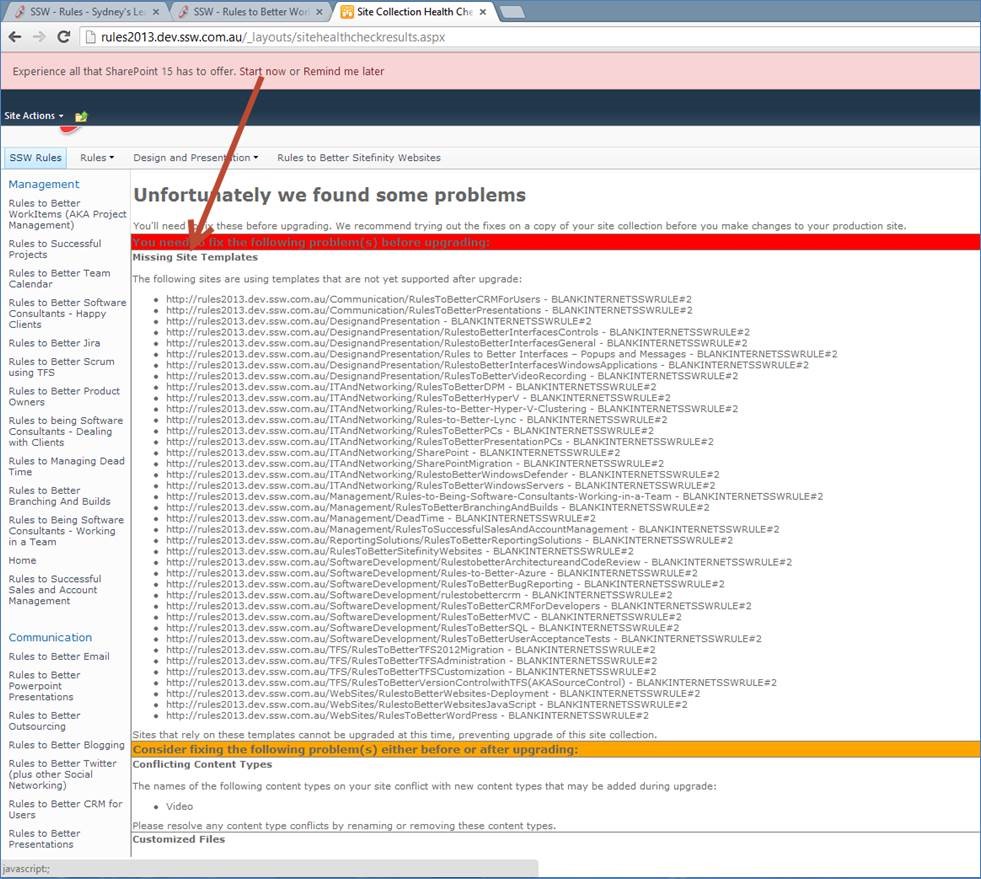Since 1990, SSW has supported the developer community by publishing all our best practices and rules for everyone to see.
If you still need help, visit SharePoint Server Consulting and book in a consultant.
You all know about a web master, the central point of contact if the website goes down. You should know about Schema Masters for Database Design. SharePoint should be no different.
The SharePoint master should be your companies SharePoint expert. All major changes to the SharePoint servers should be run by the SharePoint master including:
If you have “custom site template” for your site, you can’t upgrade your site to the SharePoint 2013 UI unless you have a site template with the same name ready for new UI.

Figure:SharePoint will show you an error “Missing Site Templates” that prevents you from upgrading
To do a successful migration, you must find all the customizations in your current environment.
Solutions must be deployed to the new site collection before the content database is resorted to the SharePoint 2010/2013/2016 server:
- Open SharePoint Central Administration | System Settings | Manage Farm Solutions
- Click on Deploy Solution
- Refer to the table you completed in the rule Do you confirm your list of installed Solutions and deploy the solutions to the same site collections they were deployed to on the SharePoint 2007/2010/2013 server.
It is strongly recommend to run a pre-migration check on the SharePoint content database before attaching it to trigger the migration process.
Depends on your SharePoint farm environments, you may need to upgrade some service applications databases.
Even though you have advised staff members a migration is taking place – you can guarantee someone will try to check-in or edit documents. The best way to prevent this is to put your content database into read-only mode, locking the content database.
After the database has finished being attached to the web application you will get a log file with information about the import process.
At a high level, the plan is: